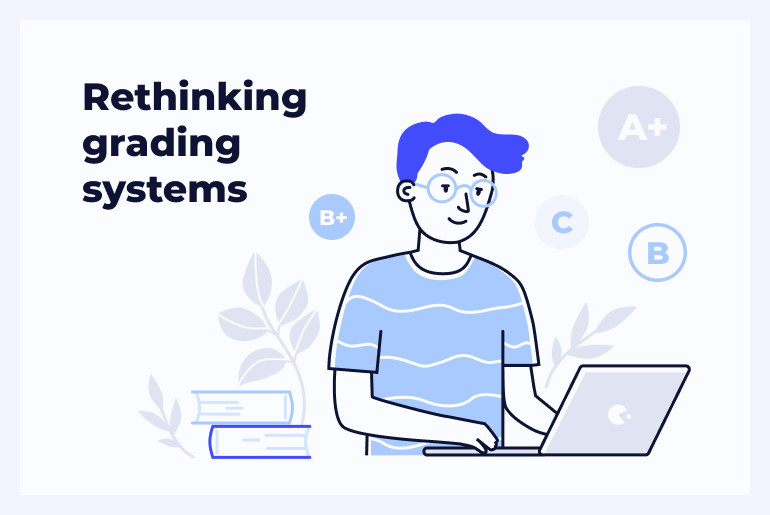Traditional academia is gone. We don’t need to be in a specific location to be learning. A couple of clicks and we’re already “in the classroom.” Technology plays a vital role in this change. What’s more, Generation Z, for whom tech has been an integral part of their lives since birth, are now students. Not to mention, “life-long learning” has become a new normal too. All these scholars have added a lot of work to academic institutions as they digest information differently from previous generations, and value mobility and freedom of choice over restrictions.
Obviously, the question of technology in education is not as plain and clear as this. It has so many dimensions that caused multiple camps, preaching pros and cons of technology, to flourish.
We will analyze all sides of technology in education to determine major benefits and challenges and to give you the idea of how to make the most of utilizing digital tools in your educational institution.
Dimensions of Technology in Education
The world of education consists of multiple sides of a single coin that need to be investigated to draw certain conclusions. There are four major elements in this system that we will measure technology through:
- Learning – students, the object of any academic process
- Teaching – instructors, providers of education
- Leadership – creating conditions for innovation
- Assessment – ways of measuring learning
Learning with Technology
Technology-enabled learning aims to provide engaging and effective learning experiences regardless of the student’s location. These experiences will prepare them for active, creative, and successful daily life in globally connected reality.
Benefits:
- Location freedom gives the potential for real-life implementation of knowledge
- Resources aren’t limited to those found within brick-and-mortar institutions
- Many complementary services, such as mentoring, are available from any spot in the world
- Continuous learning of a life skill in a digital world
- Education becomes international and connected
- Virtual science facilities accessible to every student
- Students can share their works with a general audience and receive real-life feedback
- Access to personalized learning experiences
Drawbacks:
- Adds to already excessive screen time
- Devices act as distractions and disrupt the learning process
- Can create data privacy issues
- Greater potential for cheating in the classroom
- Fewer human interaction skills learned by the students
- Being misled by false information
- Unequal access to technology that impacts the quality of education
Teaching with Technology
Technology has this potential of empowering educators to provide more effective and multidimensional knowledge to their learners. An abundance of available tools allows extending learning beyond the classroom and making education so much more appealing to youngsters than your regular books and libraries.
Benefits:
- Collaboration far beyond the walls of the school
- Designing highly engaging learning experiences
- Ensuring full participation
- Automation of the most tedious tasks
- Instant access to the most actual information
- Implementation of new technologies for learning
- Becoming guides and facilitators instead of content experts
- Becoming co-learners to inspire students
Drawbacks:
- Around-the-clock availability reduces learners’ efficiency
- The quality of research can be poor
- Technology can act as a disruptor of a learning process
- Labor-intensive lesson planning
- It can one day can replace instructors
Technology Leadership
Creating a culture of the continuous transformation of education so that it’s future-ready requires strong leadership because technology alone won’t transform learning; rather, it can enable transformative learning.
Benefits:
- Meeting increasingly higher customer expectations
- Delivering future-ready graduates
- Providing personalized learning experiences
- Corporate sector investing in higher education
- Supplying a robust technology infrastructure
- Ensuring an ongoing personalized professional learning
Drawbacks:
- It’s expensive
- Requires a complex strategy
- Most people don’t like change
- Takes time and a strong set of values
- Requires rethinking existing staff roles
Assessment with Technology
One significant yet controversial piece of this puzzle—measuring of learning. The need for instructor to check for learner understanding has always been at the core of education. Various tools for assessment are not only aimed at simplifying and speeding up the process but also at reimagining and adding even more value to it.
Benefits:
- Using data to support personalized learning
- Quick adoption and implementation
- Providing real-time feedback
- Taking over grading’s most routine part
- Potential for measuring complex competencies
- Making assessment much more fair and valid
- Adaptation to learner level of knowledge
Drawbacks:
- Rare, but possible issues running the technology
- Can be expensive
- May limit what can be measured
- Challenging for those unfamiliar with the technology
Takeaway
Clearly, there is a whole new world opening up before us as technology becomes an even more integral part of our lives. And as complex as this question of whether or not to implement technology is, what if we could look at it from a completely different perspective?
What if we imagine for a moment that technology isn’t just another trend in education, but a whole new reality for all industries, education included. What if distracted attention and complexity of implementation or who pays for technology are not the things that should be fixed? What if what you teach and how you teach will never be the same and should be reimagined and transformed with everything else to follow? The world has changed—brick-and-mortar academic institutions continue to close by the hundreds around the world, and others are put at risk by the rapidly developing online learning market.
Technology has become the new reality—the default condition of the world—and we must all do what’s right to prosper.
Content Creator at Unicheck
Interested in all things EdTech, Kate digs deep into the dilemmas of contemporary education to deliver a comprehensive picture of how the worlds of tech and academia intersect.






